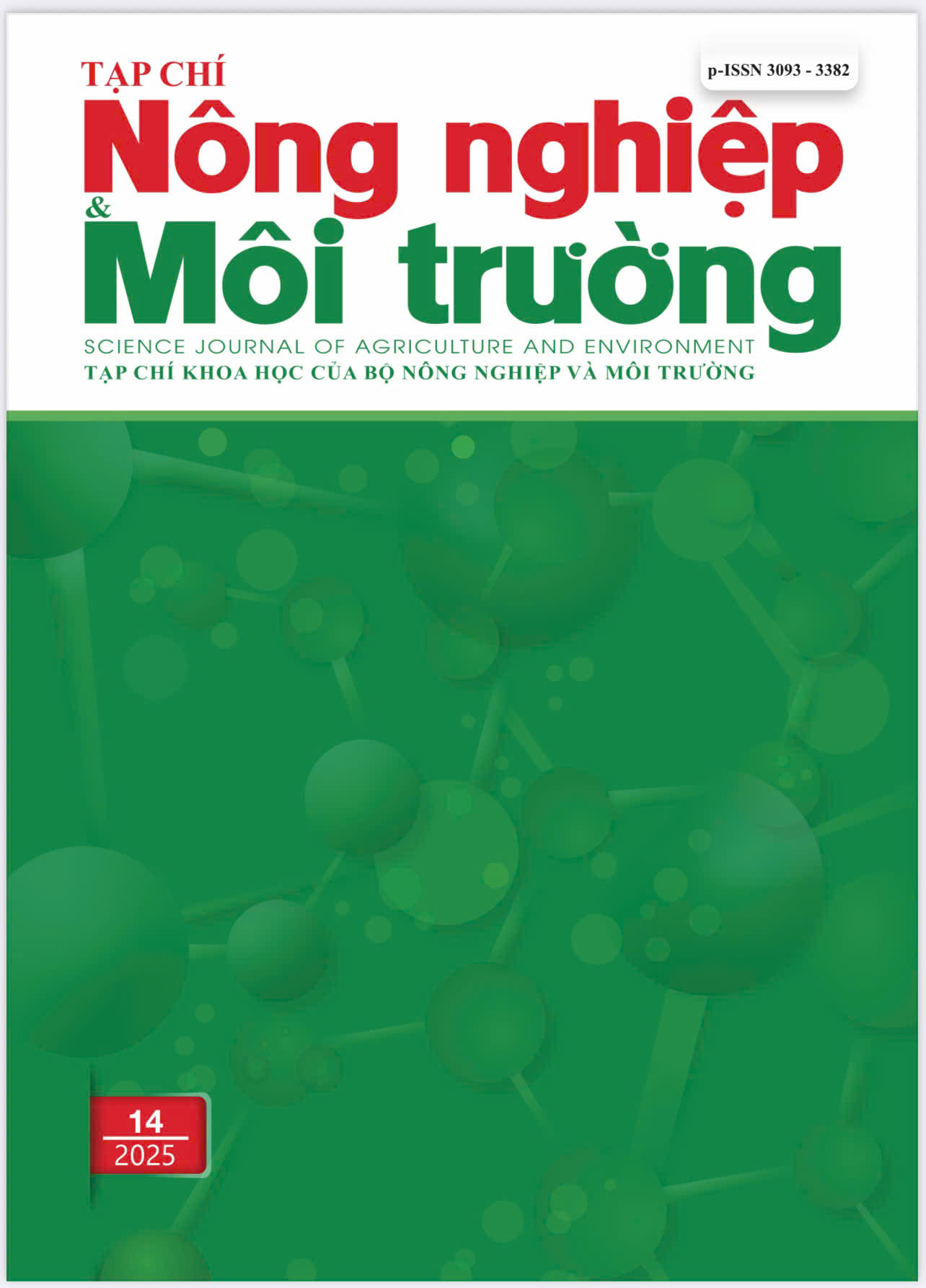SỬ DỤNG KỸ THUẬT MULTIPLEX RT - PCR PHÁT HIỆN VIRUS Cymbidium mosaic virus (CymMV) VÀ Odontoglossum ringspot virus (ORSV) GÂY HẠI TRÊN CHI LAN KIẾM (Cymbidium)
DOI:
https://doi.org/10.71254/2a0e1670Từ khóa:
Lan Kiếm, CymMV, Multiplex RT - PCR, nhiễm kép, ORSVTóm tắt
Chi lan Kiếm (Cymbidium) thuộc họ Orchidaceae là nhóm lan có giá trị kinh tế cao và luôn nằm trong nhóm hoa lan được ưa chuộng trên thị trường. Hiện nay, các bệnh do virus gây ra đang là thách thức lớn đối với các nước sản xuất và xuất khẩu hoa lan. Cymbidium mosaic virus (CymMV) và Odontoglossum ringspot virus (ORSV) là 2 loài virus gây hại phổ biến cho cây hoa lan, trong đó có Chi lan Kiếm. Mục đích của nghiên cứu này nhằm phát hiện nhanh và chính xác đồng thời CymMV và ORSV trên Chi lan Kiếm dựa vào kỹ thuật Multiplex RT - PCR. Kết quả cho thấy, có 44/48 mẫu nhiễm virus, tỉ lệ 91,6%. Trong đó, số mẫu nhiễm CymMV là 43/48 mẫu, chiếm tỉ lệ nhiễm 89,5%, chỉ duy nhất 1 mẫu nhiễm ORSV, chiếm tỉ lệ 0,2%, tương tự chỉ có 1 mẫu nhiễm kép ORSV và CymMV, tỉ lệ 0,2%, có 4/48 (tỉ lệ 0,83%) mẫu không phát hiện sự hiện diện nhiễm ORSV, CymMV. Kết quả cho thấy, Chi lan Kiếm nhiễm CymMV có biểu hiện các đốm đen tròn, vệt hoại tử đen, trong khi đó mẫu Chi lan Kiếm nhiễm ORSV thì có triệu chứng sọc màu vàng nhạt, đốm vòng trên lá. Kết quả đạt được của nghiên cứu này là thông tin hữu ích cung cấp thêm các thông tin về virus trên cây hoa lan.








